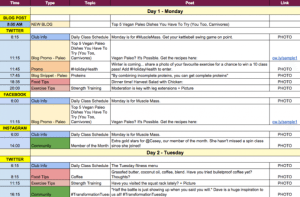Business owners already understand the importance of search.
Higher online visibility means more targeted traffic. Ranking for relevant keywords increases brand exposure and drives more sales. It’s part of the reason why local businesses are taking their online presence more seriously and working to improve local SEO.
Consider these stats compiled by Google:
- 4 in 5 consumers turn to search engine to find local information
- 88% have used a smartphone to conduct a local search
- 50% who searched on mobile made an in-store visit that day
- 18% of local searches on mobile led to a purchase within a day
- Local searches led to more purchases than non-local searches
Business owners that target local areas benefit tremendously by ranking in local search. Many already engage in marketing strategies from getting listed on local review sites to being active on social media. But blogging is easily one of the most important.
Here we look at the reasons why and how to incorporate blogging into your marketing.
Why Local Business Blogging?
Content has always driven search.
After all you use search engines to find content. Now with the Pigeon update focusing on providing more relevant and useful local results, content is more important than ever. Here are some reasons to starting blogging for your business:
- Increases search engine traffic: More content means more indexed pages in the search engines. Both of which lead to higher rankings for target keywords.
- Generates more leads: Businesses that blog generate more leads than those that don’t. Each blog post then essentially becomes a marketing tool.
- Supports social media efforts: Quality content is a key component of social media campaigns. Sharing blog posts increases their reach, resulting in more traffic.
- Builds authority: Creating useful content is one of the best ways to establish authority in your field. This brings even more awareness to your brand.
- Attracts inbound links: Links continue to be an important ranking factor. Adding new content is a way to attract quality links back to your site.
All of which help to drive more sales and push business objectives.
But implementation is absolutely critical. Haphazardly posting generic content without any focus or consideration of your audience will likely fail to gain traction. And possibly lead to a ranking penalty if you use duplicate content or stuff keywords.
Here we outline the steps to build a thriving blog that will dramatically improve the local SEO of your site.
Define Your Audience
It starts with understanding your audience. The more you know about your audience the better. Because then you can distinguish your content and set the tone in a manner that connects directly with your target market. Start with the following questions:
- What are their interests?
- What are their problems?
- What are they searching for?
- What does their work involve?
- Where do they live?
The information is invaluable for another reason: keyword research.
Understanding your audience gives you tons of new ideas to create new blog posts around. If you run a local yoga studio, keywords to target might include “yoga classes Austin”, “yoga classes for beginners”, “yoga health benefits”, etc. Targeting these phrases increases relevance for local keywords as does covering community events and creating local guides.
Create Engaging Content
Now comes the hard part: Content creation.
This is the part of the equation that most business owners stumble on. But it’s perhaps the most important step to create a successful blog. Otherwise what you are left with is a rather barren blog that barely gets any traffic. Here are some tips to create great content for your blog:
- Create unique and original content (e.g. avoid generic posts that are simply rehashed)
- Create strong headlines to spark interest in your post
- Make the content actionable and include useful tips
- Provide answers that comprehensively cover the topic
- Include relevant multimedia (e.g. images, videos, etc.)
- Be accurate in the sourcing of information
Consistency is another important factor.
One blog post (although more than what most sites have) is simply not enough to attract the kind of traffic that pushes revenue. Create an editorial calendar to keep yourself accountable and to plan your content ahead especially around the holidays.
Here is an example of what a simple content calendar looks like:
Note that this example also includes a content schedule for social media which brings us to the next section.
Leverage Social Media
Social media not only drives an enormous amount of traffic online, but also affects purchasing behavior.
Research shows that 15% of consumers use social media to search for local businesses. The survey also found that 71% were more likely to purchase from a brand they follow online. These numbers are reason enough to leverage social media into your marketing.
Here are tips to make social media work for your business:
- Choose only a few platforms to focus on (e.g. Facebook, Twitter, etc.)
- Fully build out your profiles with high quality images
- Post your content and engage with your audience
- Use tools to manage and schedule posts
- Measure and track your efforts
Sharing your content on platforms such as Facebook, Twitter, and Google Plus increases your reach and builds your authority. Both of which improve local SEO and contribute to higher rankings in the search results.
Conclusion
Blogging is a powerful marketing tool.
But many businesses have yet to implement blogging into their marketing. This means you gain a serious competitive advantage online by regularly publishing engaging content to your site. Implementing a well thought-out plan is the key to driving measurable results. Start by defining your audience to better tailor your content and leverage social media to get the word out.


